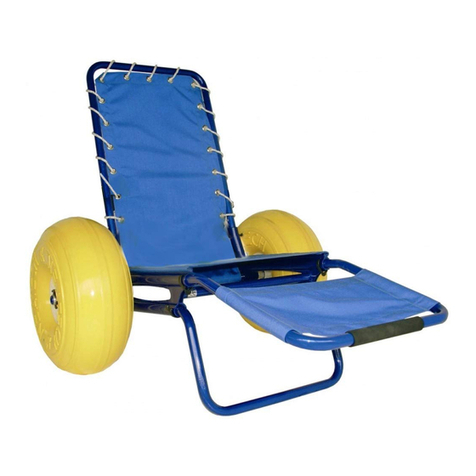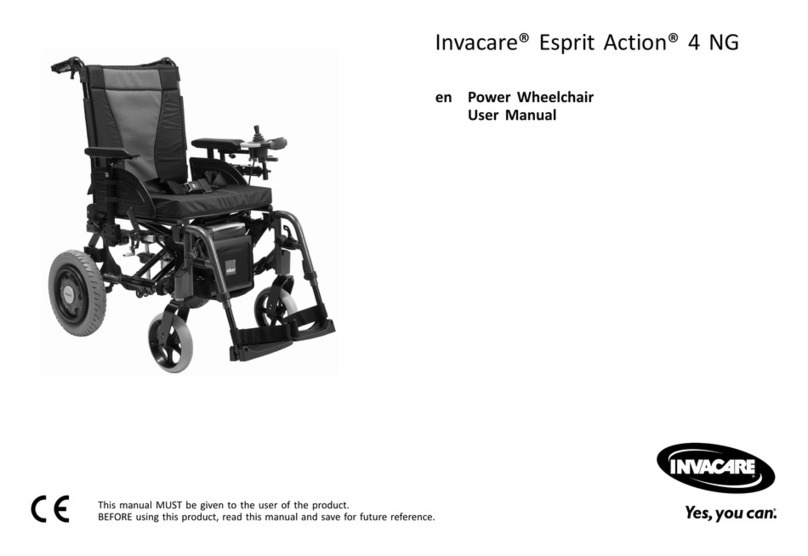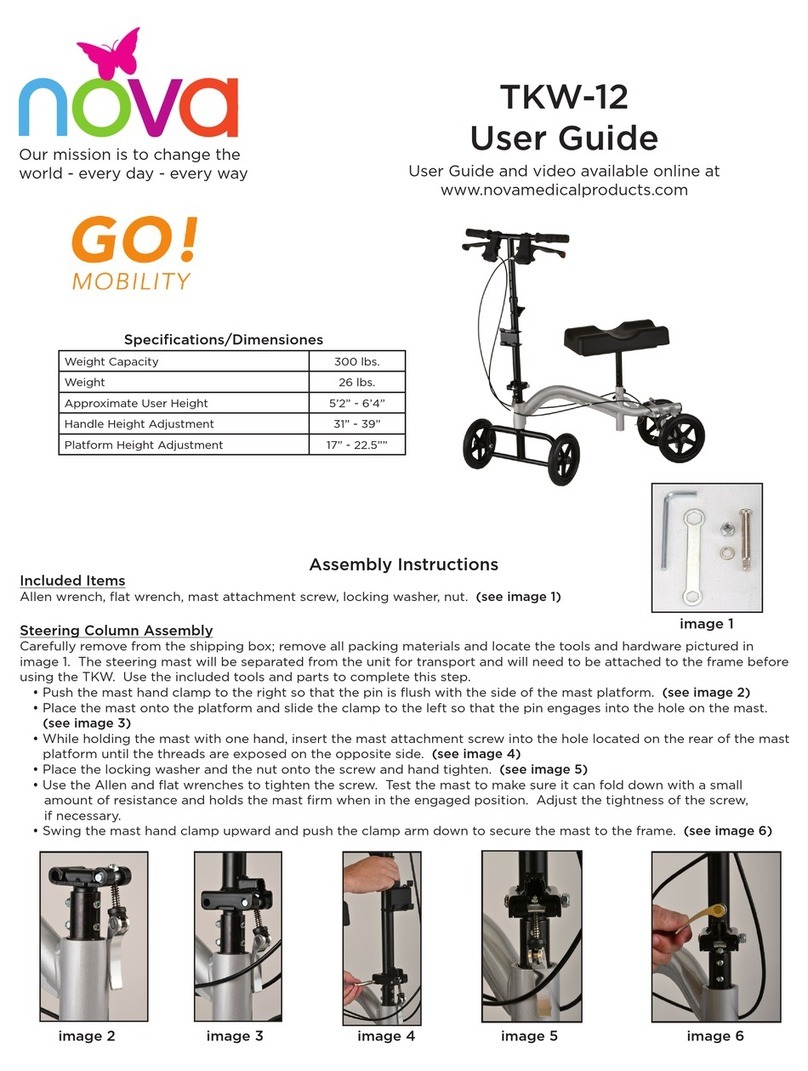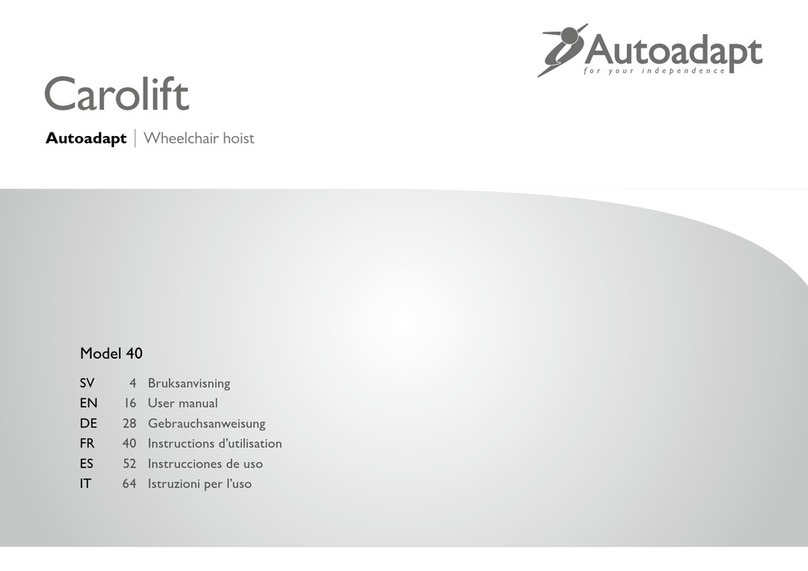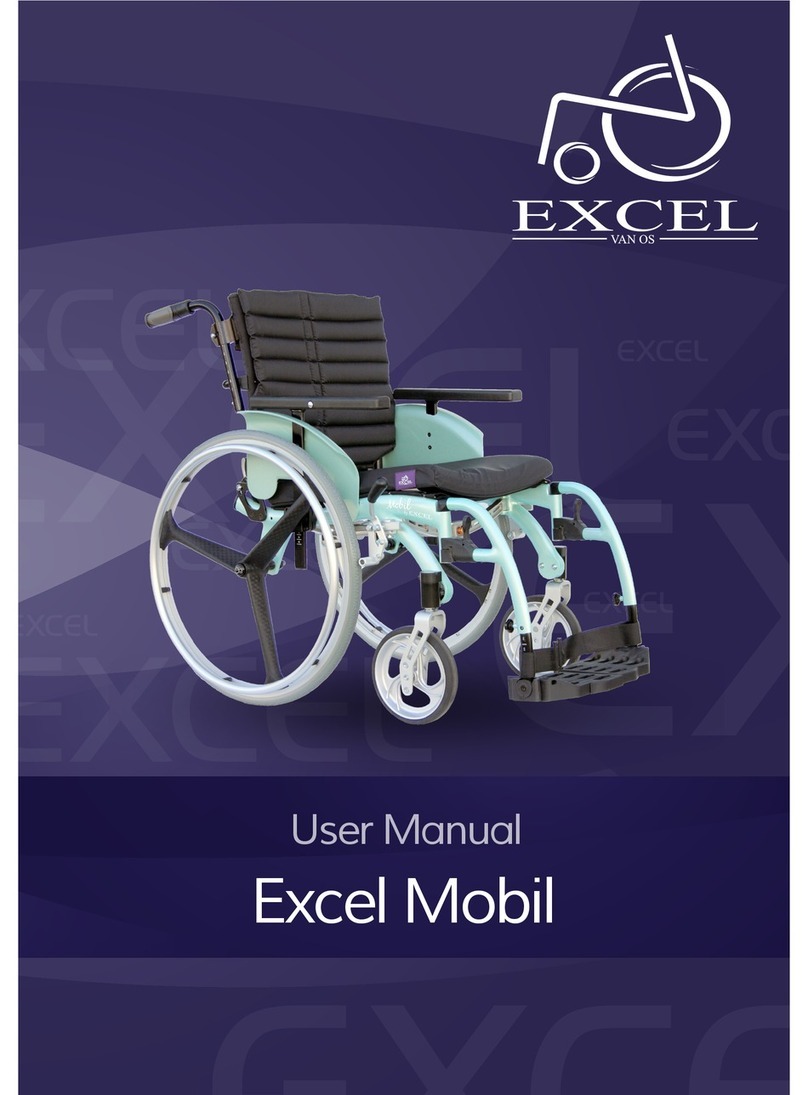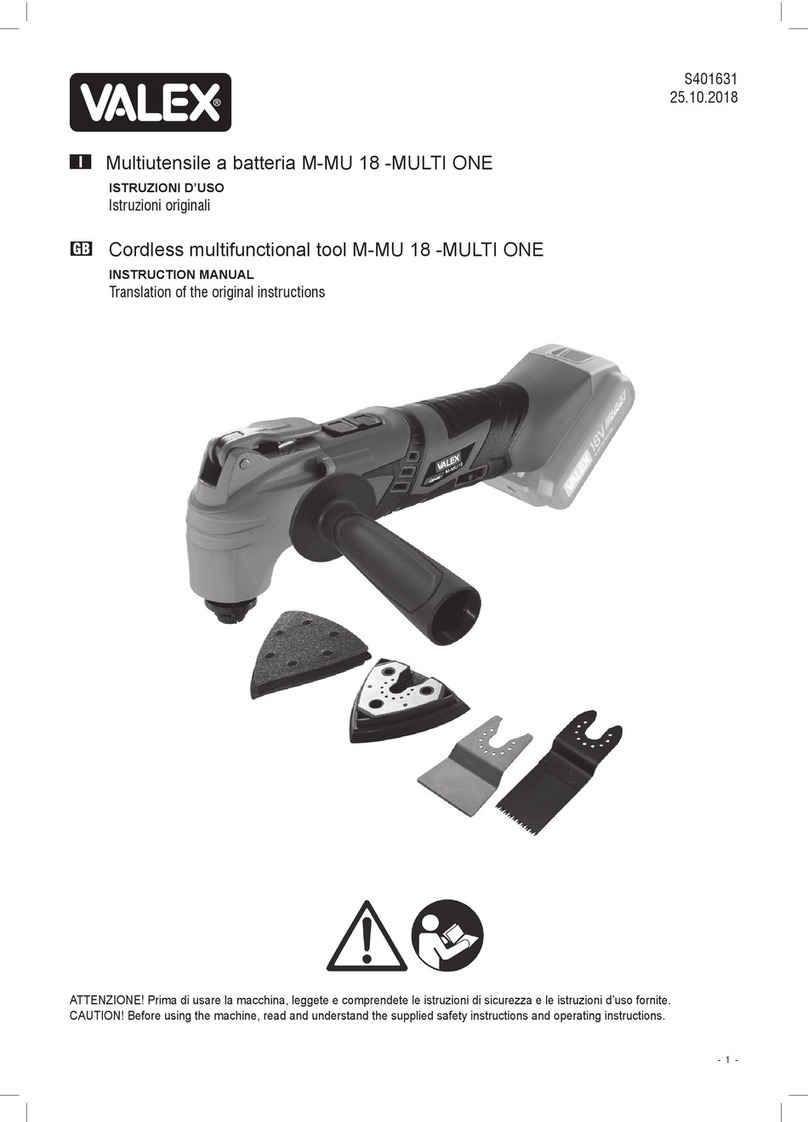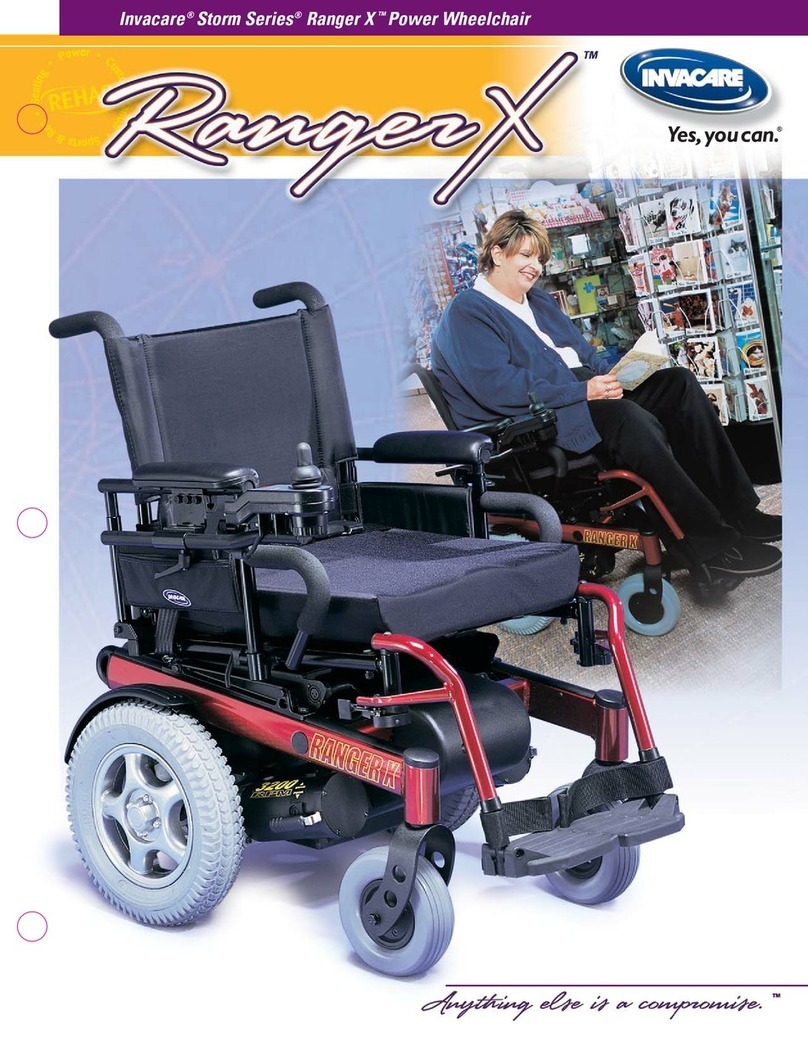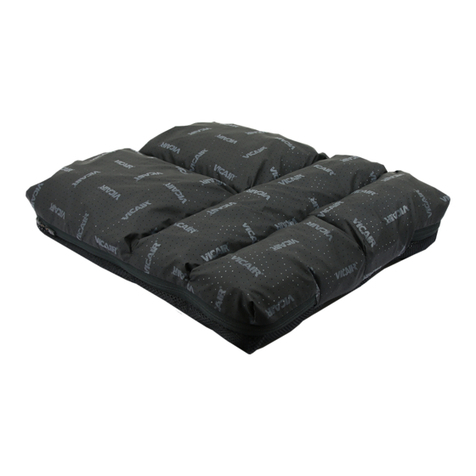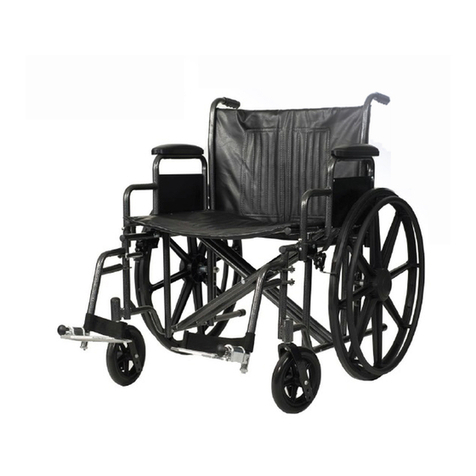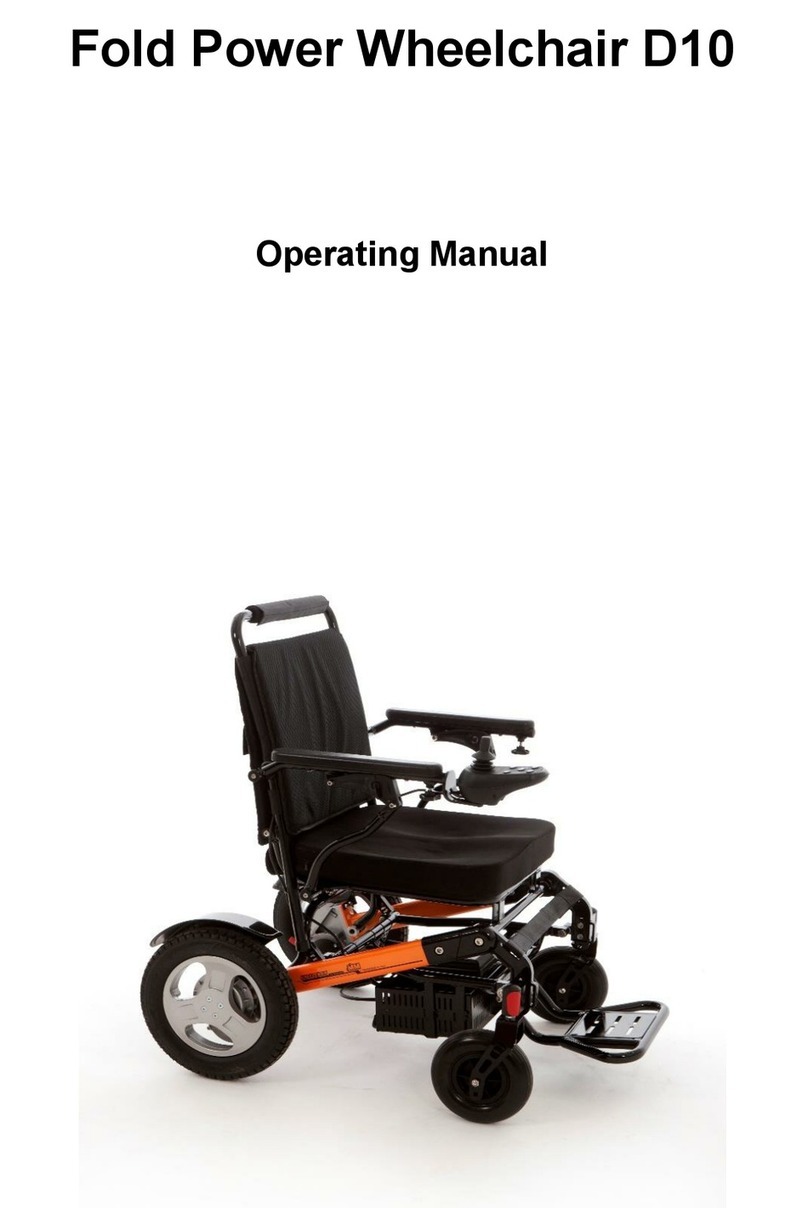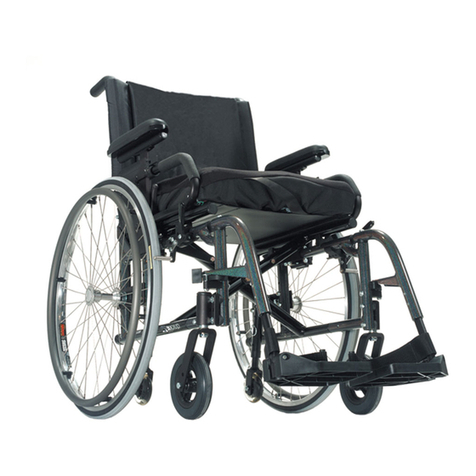Skil-Care ChairPro 909367 User manual

Safety Alarm Unit & Sensor Pad
Mounting Bracket
Continued on reverse side
LED
A
C
B
Reorder# Description Unit
909367 ChairPro Alarm Unit Each
909366 ChairPro Alarm Unit 10/pk
Status Condition
On Steady No sensor installed, battery installed
Slow Flash Sensor connected, battery installed
Rapid Flash Sensor connected, alarm activated
Light Sensor Conditions
Features:
• Low battery alert - alarm sounds when battery is low
• Sounds - two tone buzzer, high (90db), low (80db)
• Battery Test
• Auto-Reset
• Two Interfaces (connections) - Modular (telephone type) for at
sensors and mini-plug for alternative sensors
• Cable strain relief
• Shock resistance bumpers
1. Remove battery compartment cover on back of alarm unit and install two AA batteries, LED will light, steady.
2. Press “Battery Test” button. If alarm doesn’t sound check battery connection and retest.
If alarm fails to sound replace battery.
a. This alarm has a low battery alert and an alarm will sound during a “low battery condition”.
3. Insert telephone type plug into modular connection on the side of the alarm
(Illustration A). Thread the cord through the “Cable Stain Relief” cavity as shown in (Illustration B)
LED will ash. Make sure that there is some slack so that if the cord is tugged it doesn’t put pressure
on the connector. Alarm will sound. Press “Auto-Reset” button to silence alarm.
4. Before using, test unit by pressing the palm of your hand rmly against the sensor pad.
While doing this, check alarm to make certain that LED is ashing. Remove your hand.
Alarm should sound. Press “Auto-Reset” button to silence alarm. If alarm fails to sound,
make certain the telephone type plug is secure.
5. Select High or Low alarm volume using the switch on right side of alarm, and select Tone 1 or 2
6. When alarm is activated by the resident leaving the wheelchair, it maybe silenced by pressing the
“Auto-Reset” button. The alarm is now in stand-by mode. The system will automatically go into the
monitoring mode when the resident is reseated. There is no on/off switch.
Safety Reminders
1. Check battery before each use. If alarm is
weak or fails to sound, replace the
two AA batteries.
2. When unit is in use, check LED regularly.
If it is not glowing, replace the two AA batteries.
You may choose one of the three methods to attach the alarm unit to the wheelchair
Mounting Bracket
1. Remove the second-from-top screw from either the left or right side of the
wheelchair backrest (other locations may be chosen by the caregiver).
2. Remove grommet from screw, place the screw through hole on alarm unit
mounting bracket, and fasten screw (with the grommet) to wheelchair backrest (Illustration C).
OPERATION
INSTALLATION
Condition
Alarm sounds when resident stands
Alarm sounds when sensor plug is removed, while resident’s sitting on sensor
Alarm sounds when sensor pad wire (grey) is cut, while resident is sitting on
sensor. Alarm does not sound when auxiliary wire (black) is cut
Alarm sounds when batteries are low
Alarm Conditions
Note: The alarm will not sound when the sensor pad wire (grey) is cut or accidentally pulled out unless it is
activated. Also, when the sensor is activated by a resident sitting on it and the plug is accidentally pulled
out it will ring but when re-inserted, the alarm will stop ringing. All of the conditions above apply either to the
telephone type plug or mini-plug. The alarm sounds only when the mini-plug (black) is removed while sensor
is activated. It will not ring when this wire is cut.

29 Wells Ave, Yonkers, NY 10701
914.963.2040 • toll-free: 800.431.2972 • www.skil-care.com
F G H
I
DE
Reorder# Description Guarantee Unit
909350 ChairPro Sensor Pad Alarm System
(Includes: ChairPro Alarm Unit & 7” x 15” Sensor pad) 45 Days Each
909355 ChairPro Sensor Pad Alarm System
(Includes: ChairPro Alarm Unit & 7” x 15” Sensor pad) 180 Days Each
Cord Loop
1. Insert enclosed cord loop through bracket hole (Illustration D).
2. Hang from wheelchair push-handle (Illustration E).
Velcro® Tab
1. Remove the second-from top screw from either the left or
right side of the wheelchair backrest.
2. Remove grommet from screw. Place screw through eyelet
on Velcro® tab. Fasten screw to wheelchair backrest.
Make certain that “Hook” side faces away from the wheelchair
(Illustration F).
3. Remove backing from Velcro® strip with “Loop” material. Secure
adhesive to back of alarm unit, above battery compartment cover
(Illustration G).
4. Attach alarm unit to Velcro® tab (Illustration H).
CAUTION
1. The ChairPro Sensor Pad Alarm is not a substitute for proper
supervision. Fall-risk residents/patients should be monitored regularly.
2. Check battery each time alarm is used. If weak, replace the two AA batteries.
3. LED should ash when patient/resident is seated on the sensor pad. If LED fails to ash, check battery.
Replace if necessary. If LED does not glow after battery is replaced, check sensor pad. Replace if necessary.
4. If patient/resident is seated on a wheelchair cushion, place sensor pad on top of cushion. This system may not work
if sensor is placed beneath cushion.
INSTALLATION (contd.)
Sensor Pad Alarm Systems
GUARANTEES
1. The ChairPro Safety Alarm Unit is replacement guaranteed for one year
following the date of purchase.
2. The ChairPro sensor pads are replacement guaranteed for either 45 days or 180 days
(see guarantee imprint on sensor pad) following the date they are put into service.
That date must be noted on the pad for this guarantee to be effective.
These guarantees cover defects in materials and workmanship under conditions of normal use.
Please return defective part to dealer from whom it was purchased. The dealer will send the
defective part to Skil-Care and arrange for shipment of a replacement.
PURPOSE
The ChairPro Sensor Pad Alarm is designed to alert caregivers when a patient/resident has left or
fallen from the wheelchair.
INSTALLATION
1. Place sensor pad on wheelchair seat as shown (Illustration I).
2. Sensor pad connector cord is then placed through the space between the wheelchair seat and
backrest. Make certain the cord doesn’t interfere with the wheels or other moving parts.
3. Important: If patient/resident is using a wheelchair cushion, the sensor pad must be placed on
the cushion, not under it. This system may not work if sensor pad is placed beneath a cushion.
4. Sensor pad may be cleaned with a damp cloth and mild cleanser. Do not immerse pad in
water or cleaning solution. Do not sterilize.
5. Inspect pad before each use. Replace if damaged.
6. Read “Warning” on sensor pad
This manual suits for next models
3
Table of contents
Other Skil-Care Wheelchair manuals




